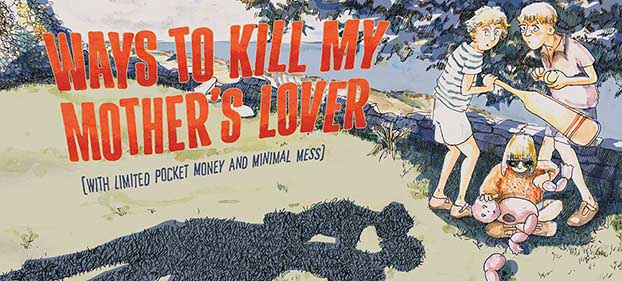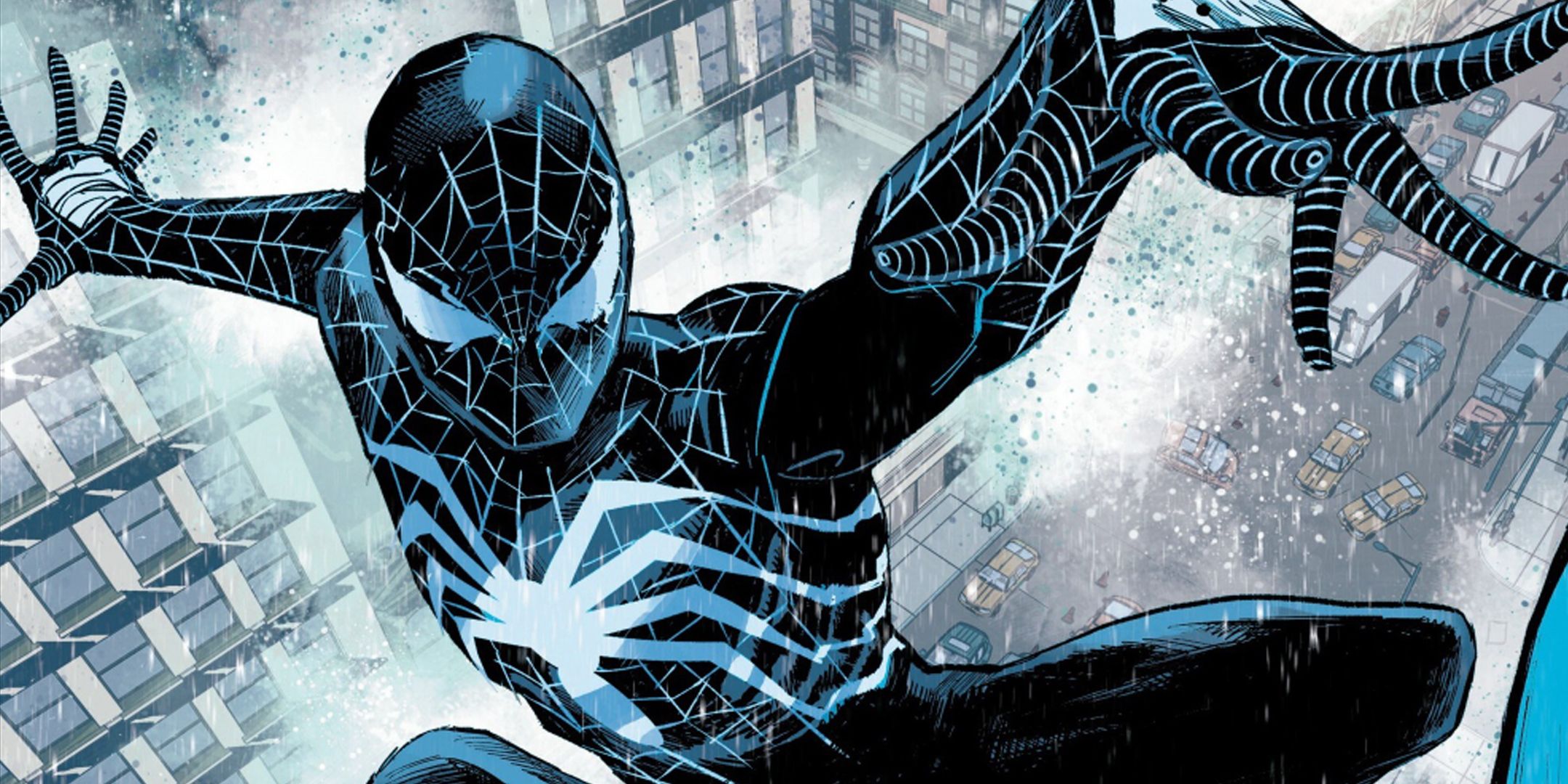Steven Ringgenberg | April 28, 2025
Artist/writer Jack Katz, whose ambitious indy epic, The First Kingdom, laid the groundwork in the 1970s for long-form graphic narratives like Cerebus, died April 24 at the age of 97. If he had not published that science-fantasy saga, it’s likely that Katz would have been regarded as just a journeyman artist, who tried — with little success — to make a living in comics. As it is, he will be remembered for his attempt, during the waning days of underground comics, to put out one of the first self-published graphic novels.
 Detail from Katz's The First Kingdom
Detail from Katz's The First KingdomJack Katz was born on Sept. 27, 1927, in Brooklyn, New York, one of the legions of cartoonists who hailed from the Big Apple, the cradle of the American comic book. Katz’s family did not stay in Brooklyn for very long; shortly after his birth, they emigrated to Canada, and he did not return to the U.S. until he was 8 years old. He was one of many budding cartoonists who received his early training from the School of Industrial Art in New York City. While taking classes there, he met and became friends with future comics artists Alex Toth, Pete Morisi and Alfonso Greene. Like so many of his colleagues, Katz broke into professional cartooning while still in his teens, working in 1943 for Archie Comics (MLJ), and joining C.C. Beck and Pete Costanza’s studio on the Bulletman feature for Fawcett Comics. Around 1944, he was also working as a letterer for the Jerry Iger shop, where he made the acquaintance of the legendary Matt Baker, an artist Katz described as “one of the top illustrators, and a good storyteller” in a two-part 2010 Alter Ego interview conducted by Jim Amash.
During the 1940s and into the early '50s, he also did work for Hillman Periodicals’ Western Fighters, Quality’s Dollman, and a variety of Better/Standard/Nedor titles such as Adventures into Darkness, Exciting War, Lost Worlds, New Romances and others. Concurrently, for a five-year period (1946 through 1951), Katz was an art assistant on various comic strips at King Features Syndicate. He met Alex Raymond and Hal Foster, two of the artists he considered his biggest influences. Foster, in particular, was his favorite artist from the age of 6. The former’s epic Prince Valiant was a major influence on Katz’s First Kingdom project, because of its broad scope and huge, varied cast. Foster told Katz that drawing comic books was a waste of his talents, Katz said, in his 2010 interview. Veteran Superman artist Stan Kaye told Katz that he should keep at it.
 Volume 1 from Prince Valiant by Hal Foster
Volume 1 from Prince Valiant by Hal Foster Page 124 from Mecca Comics Group #1-6 of The First Kingdom by Jack Katz
Page 124 from Mecca Comics Group #1-6 of The First Kingdom by Jack KatzAfter his tenure at King Features, Katz went to work for Standard Comics, where he tackled a variety of genres — war, horror and even some romance stories — from 1951 to 1953. It was while working at Standard that Katz’s distinctive style began to emerge — evident, for example, in “Me, Ghost,” a story he did for Adventures into Darkness #10 (June 1953). During this period, Katz also found work as a penciler and inker in the Simon and Kirby studio alongside artists like Mort Meskin and Marvin Stein. Collaborating with Kirby taught Katz how to improve his inking, and also how to use lighting for emphasis. Katz was heavily influenced by the work of illustrator Harvey Dunn, which caused him to include considerable amounts of detail in his art. As a result, he was a very slow artist, which led to his dismissal from the S&K studio.
 "Me, Ghost" from Adventures into Darkness #10 by Jack Katz
"Me, Ghost" from Adventures into Darkness #10 by Jack KatzKatz next went to work for Stan Lee at Atlas/Timely in 1954. His assignments there included stories in the war, Western and horror genres, including titles like Journey into Mystery, Battlefront, Annie Oakley, Uncanny Tales, Wild Western, Jungle Tales, and Marines in Battle. But again, his insistence on creating highly detailed artwork slowed the pace of his output so much that he had problems there, too. Another factor that slowed his output for Atlas was the fact that he was moonlighting at Fiction House Comics. By 1955, he had left the comics industry to become a teacher and painter. He taught classes at the New York City YMCA, and he also had a small number of private students. This break from drawing comics lasted for 14 years.
In 1969, inspired by Jim Steranko’s innovative work on Marvel’s Captain America title, Katz returned to comic books. He worked for a variety of publishers during his second career in comics. He went back to Marvel and contributed to such titles as Sub-Mariner, Monsters on the Prowl and Adventure into Fear. For the first time, Katz also did work for Marvel’s rival, DC, drawing stories for House of Secrets and romance comics like Young Love, Heart Throbs, Falling in Love and others. He also contributed to Jim Warren’s Creepy during this time, writing, penciling and inking.
This continued until 1970, when Katz went to work for Skywald’s short-lived (1970–1975) line of magazines and comic books. Katz mainly worked on Zangar stories for Skywald’s Jungle Adventures title, but also contributed “The Plastic Plague,” a story he both wrote and drew for Nightmare #14 (August 1973). He also worked as an associate editor for the company. During this period, Katz relocated to California, where he began working on The First Kingdom, which would prove to be his magnum opus. His ideas for The First Kingdom were based on concepts that he’d developed while working for Warren.
 "The Plastic Plague" from Nightmare #14 by Jack Katz
"The Plastic Plague" from Nightmare #14 by Jack KatzAfter he moved to California, Katz encountered underground comics and realized that self-publishing would give him the freedom to craft his own stories and art without anyone dictating to him the direction and scope of his story or the pace at which he had to work, which was always an issue with the slow and meticulous Katz.
He began putting out The First Kingdom in 1974, published by Comics & Comix Co., which remained his publisher until 1977 (issues #1–6). Longtime book-dealer and fanzine-publisher Bud Plant took over publishing from 1977 until 1986, re-offering #2-6 and completing Katz’ first story cycle of 24 issues. Always a deliberate and diligent worker, Katz only put out two issues a year and wrote and drew every comic, never working with assistants. No one had ever done an independent comic book quite like The First Kingdom, and Katz’s efforts were praised in the pages of both Playboy magazine and the Rocket’s Blast Comicollector fanzine. Although the series had its fervent adherents, Katz’ fan base was never very large, because his comic book never had newsstand distribution and was only available by mail order, in comics shops or in head shops alongside underground comics like Zap Comics, Slow Death and The Fabulous Furry Freak Brothers. Its commercial appeal was also limited by the infrequency with which the title appeared and by its adult content, which restricted its venues.
The First Kingdom storyline was a fantasy/science-fiction hybrid, with a growing emphasis on the science fiction component by the sixth issue. It began in a primitive, post-nuclear world populated by barbaric peoples, anthropomorphic gods and strange monsters. Just like the fables of Ancient Greece, Katz’s gods were humanoid and prone to the same vices and petty emotions humans were subject to. Also, like the Greek deities, they tended to meddle in human affairs. From the first, Katz’ series was a sprawling, multigenerational saga with a huge cast of characters and a distinct philosophical bent to the storyline, with stories that asked the big questions about the nature of evolution, religion and the course of human history.
 Page 121 from Mecca Comics Group #1-6 of The First Kingdom by Jack Katz
Page 121 from Mecca Comics Group #1-6 of The First Kingdom by Jack KatzKatz’s approach to his art was unique: All of his human and humanoid anatomy was highly detailed and accurately rendered. His panels did not have gutters like conventional comic book art, and he made frequent use of double-page spreads. His main protagonist, Tundran, was not even introduced into the storyline until the fourth issue of the comic book, but his adventures, including falling in love with “transgoddess” Fara, formed the most cohesive story arc in the saga.
The artist deliberately paced his story over the course of four issues to match the number of chapters in both The Odyssey and The Iliad, and every issue was dedicated to his wife Carolyn. The series concluded in 1986 and was intended to form the first part of a trilogy. Although The First Kingdom was not a best-selling title, it was highly regarded by many noted comics creators, including Will Eisner, Jim Steranko, Superman co-creator Jerry Siegel and comics historian R.C. Harvey, who wrote that Katz was the “first person in comics to pursue a personal vision at such length.” Katz himself stated that he intended The First Kingdom to be the first in a series of books that would extend the potential of the comics medium. Each issue of the comic was introduced by a noted comics professional, including Eisner, Steranko and others.
 Page 86 from Mecca Comics Group #1-6 of The First Kingdom by Jack Katz
Page 86 from Mecca Comics Group #1-6 of The First Kingdom by Jack KatzAfter the completion of the first 24-issue story arc, there were several attempts to reprint the series in book form. Wallaby Pocket Books reprinted the first six issues of the series in 1978 in a single large-format volume but then went no further. In 2005, Mecca Comics Group released two volumes, collecting issues #1-6 and then #7-12 in two volumes, but ceased publication before it could reprint the rest of the series. However, in recent years, U.K. imprint Titan Comics began reprinting the entire saga in 2013 in four uniform volumes that saw the original stories re-mastered and re-lettered. Two further volumes in the saga followed: The First Kingdom: The Space Explorers Club and The First Kingdom: Destiny in 2014, which brought the series to a conclusion.
After completing the first 24 issues of The First Kingdom, Jack Katz went on to teach art at a community college in California, continuing to paint and working on a new graphic novel series. His output in that time included two volumes on anatomy, appropriately titled Anatomy by Jack Katz: Drawing the Human Form (2005) and Anatomy by Jack Katz: Anatomy of the Human Form: Instructive Sketches for the Advanced Student of the Human Form (2008). He also put out two volumes of sketchbooks titled Jack Katz Sketches. Katz returned to the graphic-novel format with Legacy, a book co-written with Charlie Novinskie, the former president of Century Comics.
Katz, who resided in Albany, California, was a fixture at the San Diego Comic-Con in the ’70s and was awarded the convention’s Inkpot Award in 1982.



















 English (US) ·
English (US) ·